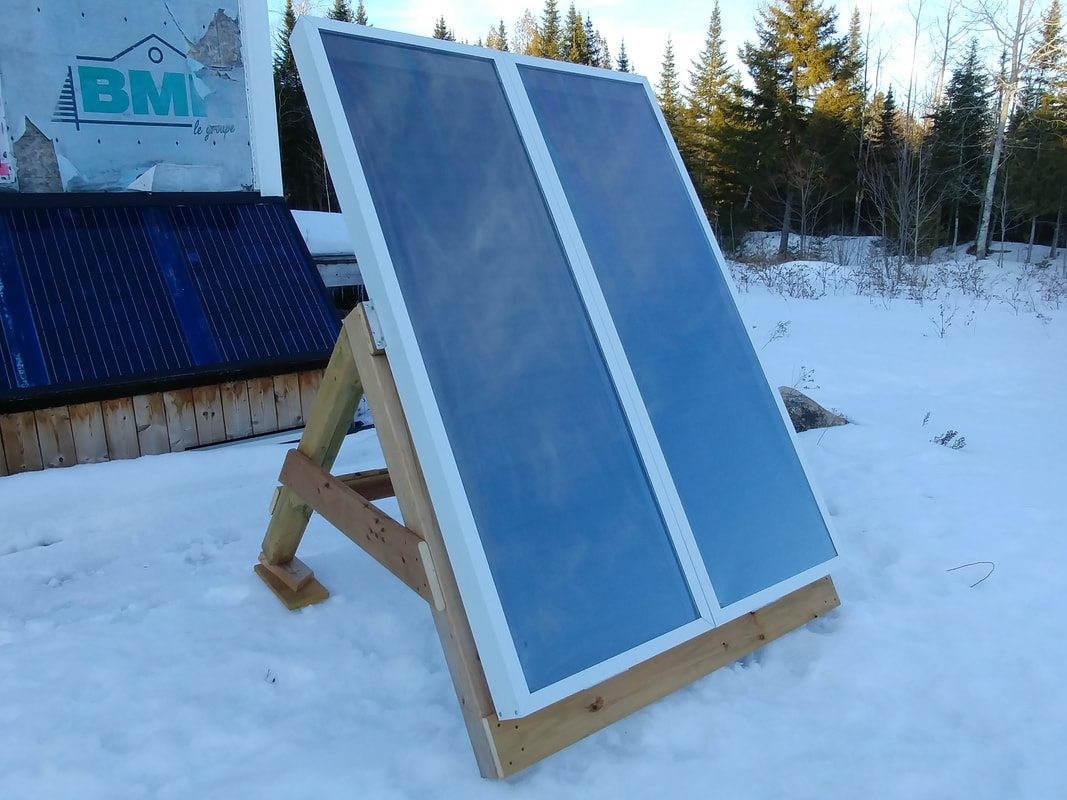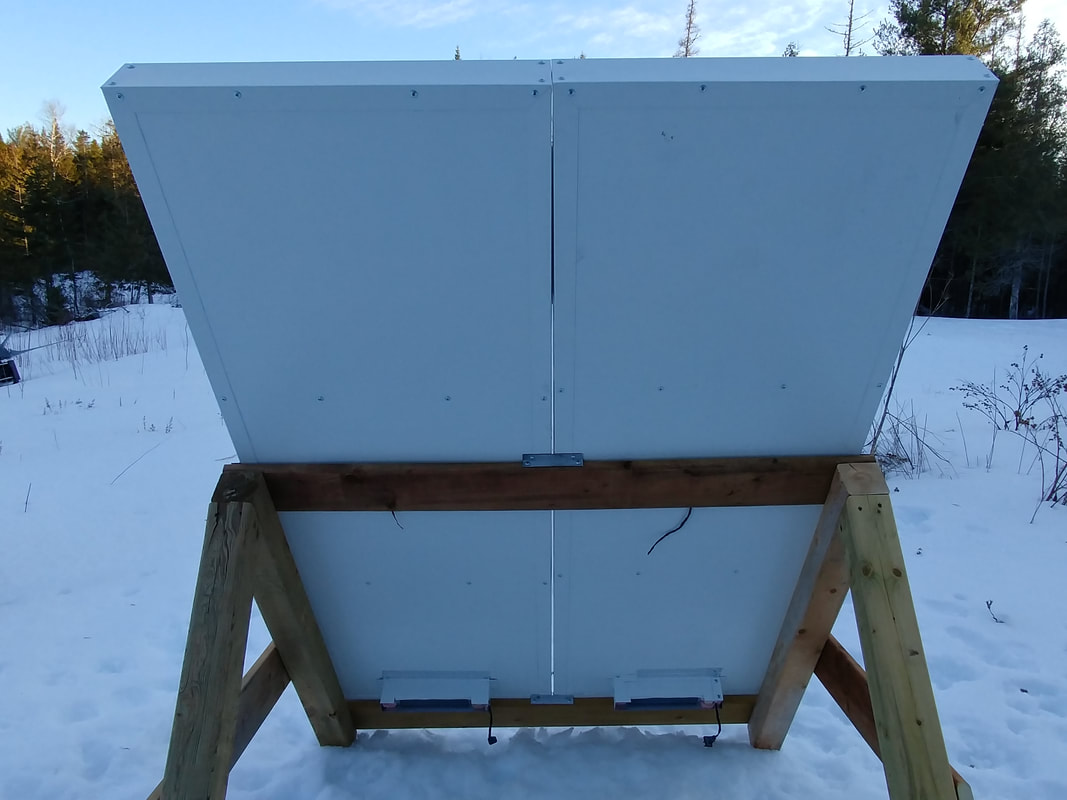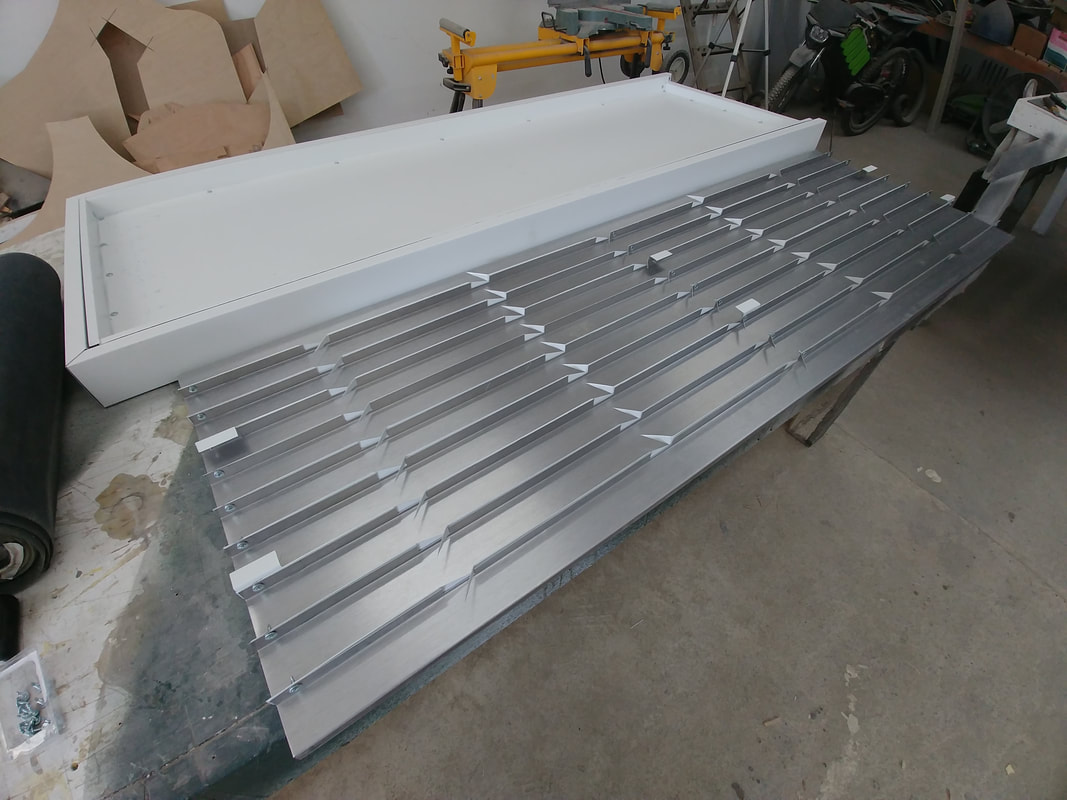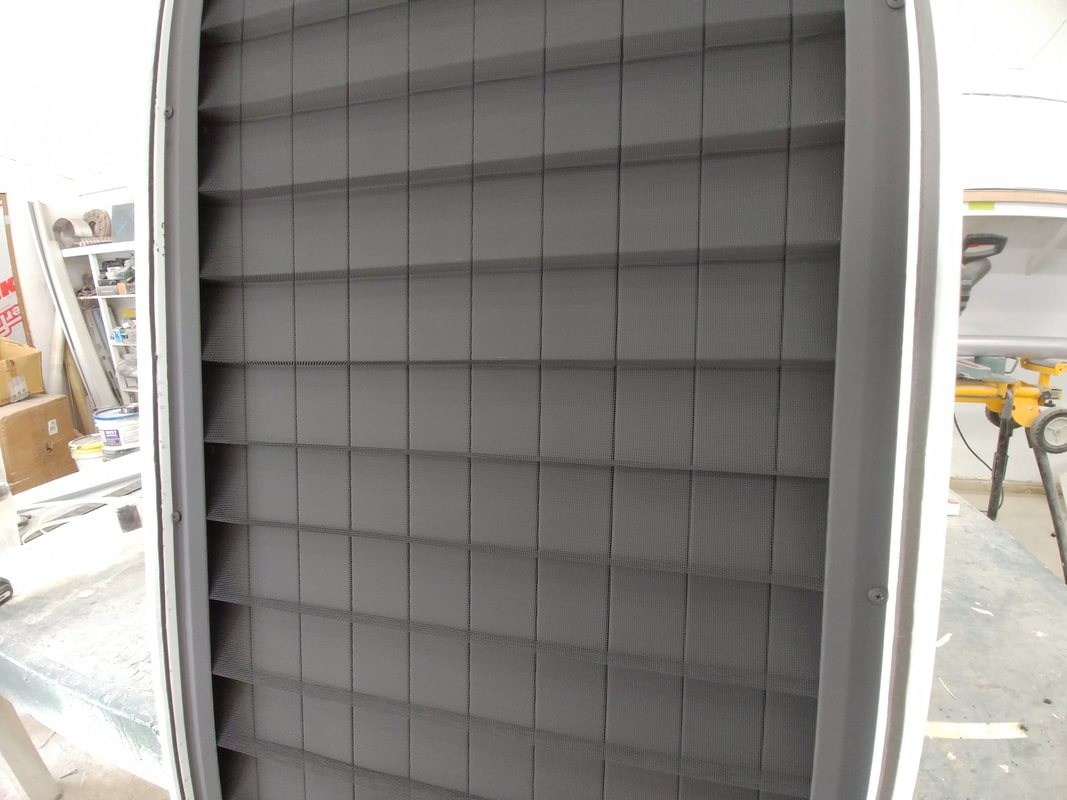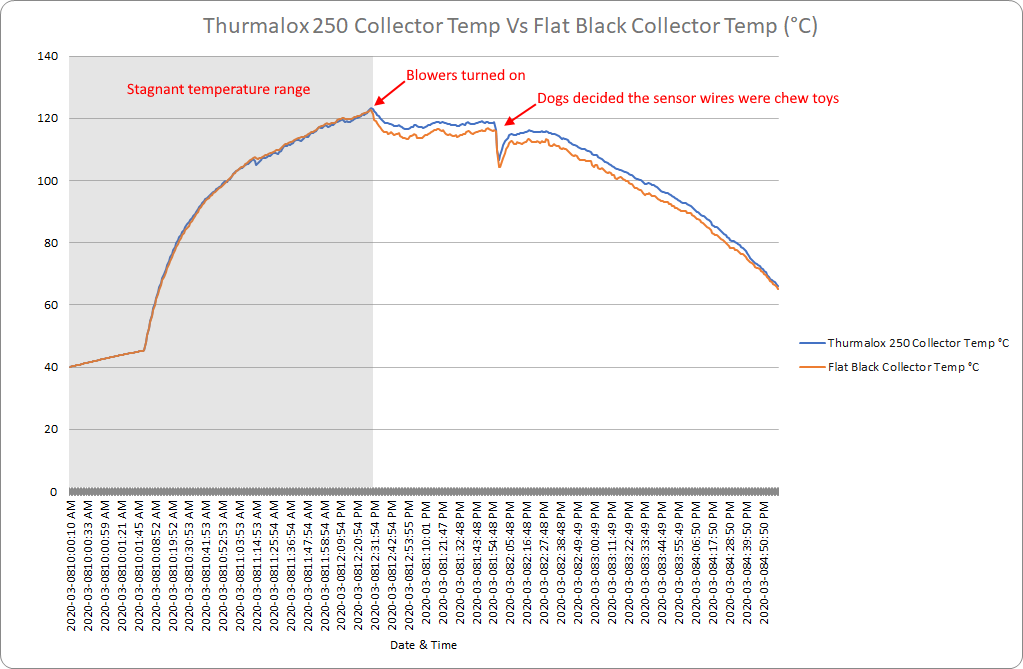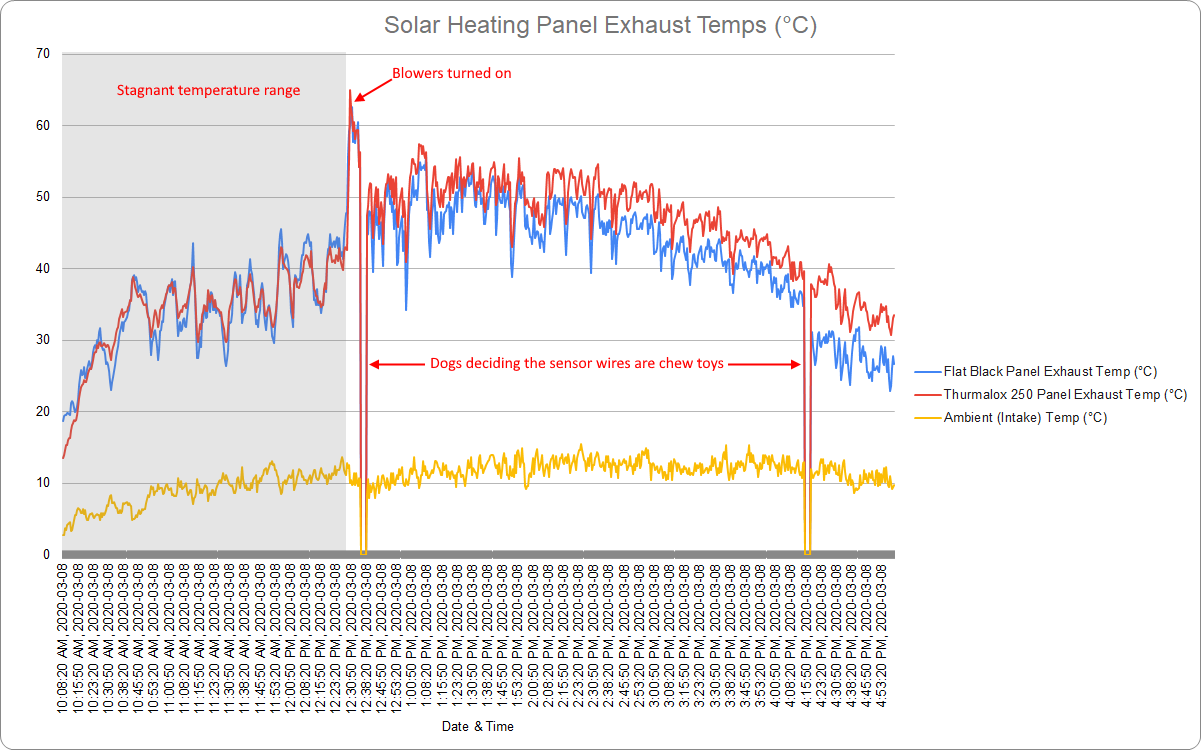Solar collector coating comparison |
|
Introduction
Building a solar air heater is a relatively simple project for a DIY'er. An effective heater could be as simple as an insulated wooden box with painted soda cans serving as the collector. Even a cardboard box with construction poly as the glazing will harness sunlight and generate heat. But not all collectors are created equal. Some designs are more efficient than others, though they can be more complicated and/or expensive. An example is whether or not to use an affordable flat black stove paint on the collector vs a more expensive selective surface coating for a more efficient heater. Up until recently, the latter hasn't been available to much of the general public.
A selective coating has high absorbence and low emittance properties to help maximize the amount of solar energy the collector captures. Flat black paint has high absorbence, but also high emittance properties, so it 'reflects' more solar energy away from the collector than a selective surface coating would. Exactly how much depends on the manufacturer.
The comparison below shows the performance of both a selective coating and a flat black paint used on the collectors in two individual but identical solar air heaters. The data presented here was collected for educational purposes, and is free to download for personal use.
A selective coating has high absorbence and low emittance properties to help maximize the amount of solar energy the collector captures. Flat black paint has high absorbence, but also high emittance properties, so it 'reflects' more solar energy away from the collector than a selective surface coating would. Exactly how much depends on the manufacturer.
The comparison below shows the performance of both a selective coating and a flat black paint used on the collectors in two individual but identical solar air heaters. The data presented here was collected for educational purposes, and is free to download for personal use.
Methods
|
Two identical heaters were constructed with 0.024" aluminum flatstock (frame and collector, & trim), total dimensions measuring 25.5" wide, 72.5" high, and 3.5" deep. The collector area in each heater measured 10 sq.ft, and were configured for a double pass, open loop airflow; outside air is drawn into the bottom of each heater and passes through a louvered screen matrix collector. Once the airflow reaches the top, it turns behind the finned back absorber plate and travels toward the bottom of the panel again, scrubbing as much heat from it as possible before exiting the back of the heaters. The airflow is driven by a 10W, 40 cfm crossflow fan in each heater.
|
|
The frame and back of the heaters were insulated with fiberglass and 1" polyisocyanurate (~R6). The glazing consisted of two layers; the inner layer was thin film polycarbonate, and the outer layer was tempered safety glass. The layers were separated by a 3/8" air gap to help lower heat loss.
The heaters were mounted onto a wooden rack, oriented south and fixed at approx. 50°. Temperature sensors were placed on the surface of both collectors to measure stagnant and active surface temps. Sensors were also placed at the air intake ports and exhaust ports to measure the temperature gain (delta). Data was recorded via DLH9097 and Omega DVT4 loggers, and then exported to Excel. Internal pressure drop within the heaters wasn't measured, but airflow was measured and it did drop to ~30 cfm during the test, so btu calculations should be based on this figure.
The panels were tested for a period of approx. 7 hours. From 10am-12:30pm, the airflow in the heaters remained stagnant for the purpose of establishing peak temperature gain on the collector surface at solar noon. Blowers were then activated, and the airflow became active for the remainder of the test period.
The heaters were mounted onto a wooden rack, oriented south and fixed at approx. 50°. Temperature sensors were placed on the surface of both collectors to measure stagnant and active surface temps. Sensors were also placed at the air intake ports and exhaust ports to measure the temperature gain (delta). Data was recorded via DLH9097 and Omega DVT4 loggers, and then exported to Excel. Internal pressure drop within the heaters wasn't measured, but airflow was measured and it did drop to ~30 cfm during the test, so btu calculations should be based on this figure.
The panels were tested for a period of approx. 7 hours. From 10am-12:30pm, the airflow in the heaters remained stagnant for the purpose of establishing peak temperature gain on the collector surface at solar noon. Blowers were then activated, and the airflow became active for the remainder of the test period.
Results
The data below shows the results of the test comparison. Please note that this is NOT an endorsement of either coating, but merely an attempt to provide public data that can be used for analysis and deciding which approach is best on an individual basis. It's recommended that every builder review the data carefully and determine a cost benefit analysis for their specific needs, based on the materials available to them. For example, is it cheaper to use a selective coating and build a more efficient heater, or use a standard flat black stove paint and simply increase the collector size by X amount to compensate? That will ultimately depend on the cost of local building materials and construction time.
|
| ||||

